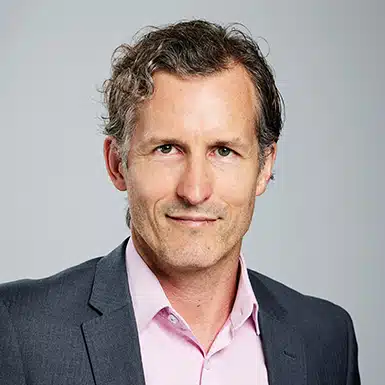
Capital
|
BHP (ASX: BHP) CEO Mike Henry warned shareholders the pace of reform was moving faster in other countries. “Australia can’t afford to be flat-footed in the race for global investment,” he told the annual general meeting. “Energy policy needs to be a focus, with electricity costs in Australia two or more times higher than Canada, Indonesia and other countries and 50-100% higher than the US. A clear-eyed view … is the starting point for being in the contest at all.”
RedEarth launched the first Australian-made vehicle-to-grid bi-directional charger. “The V2G Charger will allow EV owners to use their vehicle’s mobile battery system to supplement their home energy storage system, providing access to additional energy reserves during grid outages,” CEO Marc Sheldon said. The local manufacturer also released the next generation of energy storage system Gecko and low-voltage battery Troppo, which is expected to be available in early 2026.
Woodside (ASX: WDS) announced a US$1.9 billion deal with US-based gas infrastructure giant Williams (NYSE: WMB) for a landmark US project. “With strong LNG contracting momentum from Louisiana LNG and our portfolio, our existing infrastructure partner New York-based Stonepeak, and our key contracting partners including Bechtel, Baker Hughes and Chart, we are on track to deliver first LNG in 2029,” Woodside CEO Meg O’Neill said.
Northern Minerals (ASX: NTU) launched a $60 million institutional placement in the wake of Australia’s mega-deal with the United States. (AFR)
 Projects
|
AEMO assigned Frontier Energy (ASX: FHE) 88.06MW of peak capacity credits to Stage One of Waroona in Western Australia. The project is being developed in stages, starting with a 120MW solar farm and a 80MW battery, and is due to come online as coal plants exit. “Importantly, this foundational revenue is in addition to revenue from energy sales and underpins the Waroona Project’s already robust economics. We are aiming to finalise the financing for development in the coming months,” the company said. (Ausbiz)
GE Vernova will supply QPM Energy with two LM6000 aeroderivative gas turbine packages for the new Isaac Power Station in Queensland, a project set to deliver up to 112MW by mid-2027. The turbines, suitable for peaking and baseload generation, will use QPM’s existing gas reserves or coal mine waste gas (with at least 50% methane) that it collects.

Policy
|
Australia has been urged to move from decades of compliance-driven “engagement” with First Nations stakeholders to the approach built on co-ownership, shared risk and long-term collaboration in countries such as Canada, the United States and Chile. “The real opportunity over the next 20 or 30 years is where we see Indigenous Peoples very much move into the role of co-investors, where they can take on some of the risk with the developers of the assets and being part of capital raising and taking equity positions,” Darren Godwell, Chair of Indigenous Business Australia (IBA), told IMARC 2025.

Regulation
|
AEMO, after publishing version 7.0 of the NEM Reform Implementation Roadmap earlier this week, announced a general briefing scheduled for Monday, November 24.
The Australian Energy Regulator (AER) granted a ring-fencing waiver to CitiPower, Powercor and United Energy for a kerbside electric vehicle (EV) charging trial until mid-2031. The waiver will allow installation of up to 100 EV chargers (which must include at least 5% vehicle-to-grid chargers) to test, analyse and publicly report on how kerbside EV charging can be used to manage local network constraints, improve voltage stability, and shift demand away from peak periods.

Technology
|
Fortescue Metals (ASX: FMG) says the giant electric haul trucks it will use to replace its trucking fleet are “diesel equivalent options now” that will save money while also driving decarbonisation efforts. (Renew Economy)

Climate
|
The verdict is in: To comply with the law, COP30 must deliver, Senior Attorney for the Climate and Energy Program at the Center for International Environmental Law Erika Lennon writes.

People
|
Iberdrola Australia appointed outgoing Powerlink CEO Paul Simshauser as its CEO. Current CEO Ross Rolfe will step down but continue in his role as Chairman.
The AER appointed Kieran Donoghue (Chair) and Ron Ben-David to a Consumer Reference Group (CRG) and a panel of Eligible Experts — David Johnstone, Dinesh Kumareswaran, and Graham Partington — for its 2026 Rate of Return Instrument (RORI) review.
AEMO Non Executive Director and former AusNet Services CEO Nino Ficca joined energy startup PolarBlue as a strategic adviser.
South32 (ASX: S32) Chair Karen Wood will retire from the board in February 2026 and will be succeeded by board member Stephen Pearce.

Research
|
Critical minerals used in clean energy technology have the greatest potential to become important for the Australian economy but the outlook is uncertain and, in the near term, based on projects currently underway and announced, growth in production is likely to remain subdued, the Reserve Bank warned in a research bulletin.

Random
|
Mosquitoes have been spotted in Iceland for the first time ever, a development thought to be linked to climate change. (WashPo)

